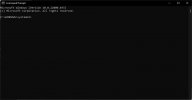britechguy
Well-Known Member
- Reaction score
- 5,073
- Location
- Staunton, VA
I’m not fond of them.
I'm fond of some, not of others. Just like has been the case with each and every new Windows version since the first new Windows version.
As @Porthos has pointed out, during the early days of any Windows version clever folks out there find the ways, where possible, to make tweaks to make things work "more like I'm used to" and, very often, Microsoft is making exactly those same sorts of changes based on user feedback not far behind.
But I say the following universally, "What you, the individual user, do and do not like is entirely irrelevant. Operating systems are not now, and never were, bespoke pieces of software tailored to your individual tastes. They are designed to be Swiss Army knife type affairs meant to allow diverse demographics to do what needs doing and where every one of those demographics will have things they love and things they hate. If you're staying with any operating system, you take what the maker gives you and customize it within the capabilities of doing so."
We really need to disabuse people of the idea that their personal like or dislike of any given operating system's design idioms is what should be the primary factor in selection. Those design idioms change, but if you have time and effort (often years of it) invested in a given ecosystem you can and should "go with the flow" as a matter of logic, reason, and in the case of businesses, sound business practice.



